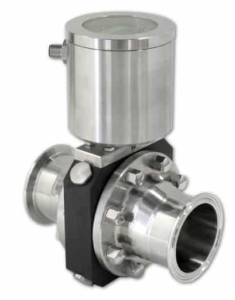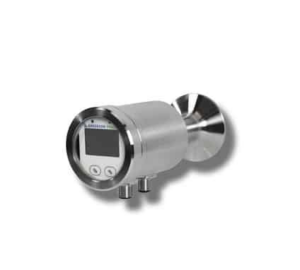achieving sustainability goals with anderson turbidity sensors
Anderson-Negele’s ITM series of sanitary turbidity meters come in, offering precise, real-time monitoring and control to help you achieve your sustainability goals.
Why Turbidity Control Matters for Sustainability
Turbidity control is a preferred method for differentiating fluid media in inline processes, allowing for optimized resource utilization and reduced waste. These inline turbidity sensors provide two advanced measurement methods, ensuring optimal control for any level of turbidity. Whether you need to monitor high-purity fluid media with a low range of 0 to 5 NTU (0 to 1 EBC) or manage products with medium to high turbidity levels up to 300,000 NTU, we have the right solution.
- Reduced Waste: Precise phase transition monitoring minimizes product loss.
- Optimized CIP: Real-time CIP control reduces water and chemical usage.
- Consistent Quality: Ensures uniform product quality, reducing rework and waste.
Typical Applications for Hygienic Inline Turbidity Sensors
- Product Differentiation:
- Differentiating milk, cream, and whey.
- Distinguishing between beer, wort, and water.
- Sorting various fruit juices.
- Identifying product, water, or cleaning agents.
- Phase Transition:
- Precise CIP control with real-time monitoring.
- Automated pre-rinse water stoppage for optimal cleaning.
- Process Control:
- Filter monitoring and separator control.
- CIP process optimization based on pollution levels.
- Quality Monitoring:
- Optimizing cream concentration and maintaining beer turbidity.
- Ensuring uniform turbidity in juices and mixed drinks.
- Analyzing water quality before product mixing.
ROI Calculator: Saving Time and Resources
Wondering if installing a turbidity sensor is financially worthwhile? Our ROI calculator helps you find out in just a few clicks.
- Inline turbidity analysis offers significant time and resource savings compared to traditional methods.
- One customer reduced phase transition time by 65 seconds compared to time control methods.
- Ask a Rodem rep to help calculate your possible ROI.
Advantages of Turbidity Measurement Across Industries
 Turbidity sensors provide real-time, automated monitoring of liquids in various production processes and CIP systems.
Turbidity sensors provide real-time, automated monitoring of liquids in various production processes and CIP systems.
- Instant Product Differentiation and Monitoring: Improved product yield and resource utilization.
- Continuous Process Monitoring: Reduced downtime and equipment damage.
- Enhanced Product Quality: Consistent high product quality and minimized deviations.
- Efficient CIP Media Management: Savings on CIP cleaners, reduced water consumption, and lower wastewater output.
- Accurate Filling Process: Elimination of incorrectly filled products.
- Cooling Circuit Integrity Monitoring: Early warning to prevent severe cooling circuit damage.
Which Turbidity Sensor is Best Suited for Your Application?
We offer various models to meet your specific needs:
- ITM-51: For medium to high turbidity levels (200 to 300,000 NTU).
- ITM-4: For high-precision, low-range measurements (0 to 5,000 NTU).
- ITM-4DW: Specifically adapted for drinking water applications.
Traditional Methods vs. Turbidity Measurement
Traditional methods like manual sampling and time-controlled phase transitions often lead to:
- High labor costs.
- Inconsistent sample quality.
- Waste of valuable product and cleaning agents.
Anderson-Negele’s ITM series automates these processes, reducing costs and improving efficiency.
Measuring Principles: Backscattered Light and Four-Beam
- Relative Turbidity Measurement (ITM-51): Uses backscattered light for medium to high turbidity.
- Four-Beam Turbidity Measurement (ITM-4): Combines transmitted and scattered light for high sensitivity.
Hygienic by Design
Our sensors meet international standards for food processing equipment, ensuring:
- No dead-legs and easy cleaning.
- High-quality materials (stainless steel, sapphire, PEEK/PPSU).
- Durability and longevity.
Process Adaptations and Installations
We offer flexible installation options for new and existing systems.
- ITM-51: Compact and front-flush, with remote version available.
- ITM-4 and ITM-4DW: Ring-shaped sensors for various pipe diameters.
By implementing Anderson-Negele turbidity meters, you can significantly enhance your sustainability efforts while improving operational efficiency and product quality.
Learn more about Anderson Turbidity Meters here.




